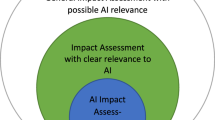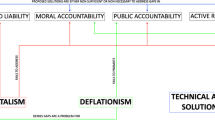Abstract
This article discusses the difficulties in utilising accident analysis as the basis for the development of complex socio-technical systems, and how to improve accident analysis to better meet such aims. It focuses on two themes: accident models and experts’ involvement in accident investigation. The article describes the development of a new core task analysis-based method for accident analysis. It also elaborates on the method by presenting summarising results of an investigation in which several maritime accidents were first analysed case-by-case, followed by a comparative analysis and a synthesis. The latter phases aimed at providing evident-based generic explanations for the accidents. The accidents occurred in Finnish coastal waters during sea or canal piloting between 1997 and 2000. The authors participated in both phases of the investigation for which the Finnish Accident Investigation Board was responsible. The presented method is argued to promote solutions to two current problems in accident investigation: generalisation from the results, and integration of the experts’ work.





Similar content being viewed by others
Notes
C 11/1997 M, C 4/1998 M and C 5/1998 M also available in English (http://www.onnettomuustutkinta.fi/2601.htm)
The different interactions (table 2): op = operator-process; oo = operator-operator and ei = expert identity, to own actions.
References
AIB 2/1993. ATC incident at Helsinki-Vantaa airport, Finland, on 29 October 1993
AIB B 8/1997 L. ATC Incidents near Vihti VOR Radio Beacon, Finland, on 25 October 1997 and on 20 August 1997
AIB C 11/1997 M. Ms GRIMM, grounding outside port of Kotka, 1 October 1997
AIB C 15/1997 M. Ms MARIE LEHMANN, grounding on the fairway to Tammisaari, 21 November 1997
AIB C 16/1997 Mt CRYSTAL AMETHYST, grounding off Mussalo harbour in Kotka, on 1 December 1997
AIB C 1/1998 Pusher barge MEGA/MOTTI, grounding at Airisto on 5 January 1998
AIB C 4/1998 M. Ms. GERDA, grounding outside port of Kotka, 7 April 1998
AIB C5/1998 M. Ms BALTIC MERCHANT, grounding in Puumala at Hätinvirta, 21 April 1998
AIB C 9/1998 M. Ms CHRISTA, grounding off Kotka, 23 November 1998
AIB C 13/1998. Ms TRENDEN, grounding off Rauma, 17 December 1998
AIB C 11/1998 M. Ms GARDWIND, grounding off Kotka, 5 December 1998
AIB C 2/2000 M. Ms AURORA, dangerous incident and grounding south of Helsinki pilot station Harmaja on 6 March 2000
AIB S 1/2005 M. Explaining maritime accidents—practices and cultures of piloting. English summary
Arbeitskreis “Kapitän/Lotse” 1995. Schiff and Hafen No 2/96
Botting RM, Johnson CW (1998) A formal and structured approach to the use of task analysis in accident modelling. Int J Hum Comput Stud 49(3):223–244
Carpignano A, Piccini M (1999) Cognitive theories and engineering approaches for safety assessment and design of automated systems: a case study of a power plant. Cogn Technol Work 1:47–61
Clot Y, Fernandez G, Carles L (2002) Crossed self-confrontation in the ‘clinic of activity’. In: Proceedings of the 11th European conference on cognitive ergonomics, pp 13–18
Dekker SWA (2002) Reconstructing human contributions to accidents: the new view on error and performance. J Saf Res 33(3):371–385
Dewey J (1999) The quest for certainty. A study of the relation of knowledge and action (Finnish translation). Gaudeamus, Helsinki
Diestel HH (1996) Lotse als Team-Leader? Schiff and Halfen No 3/96
Engeström Y (1987) Learning by expanding: an activity-theoretical approach to developmental research. Orienta, Helsinki
Engeström Y (1999) Activity theory and individual and social transformation. In: Engeström Y et al (eds) Perspectives on activity theory. Cambridge University Press, Cambridge, pp 19–38
Fahlbruch B (2000) Vom Unfall zu den Ursachen. Empirische Bewertung von Analyseverfahren. Maschinenbau und Produktionstechnik. Technische Universitä, Berlin 185
Gauthereau V (2003) Work practice, safety and heedfulness. Studies of organizational reliability in hospitals and nuclear power plants. Unitryck, Linköping
Hammersley M (1990) Reading ethnographic research: a critical guide. Longmans, London
Hollnagel E (2002) Understanding accidents—from root causes to performance variability. In: IEEE 7th Human Factors Meeting, Scottsdale, Arizona, 2002
Hollnagel E (2004) Barriers and accident prevention. Ashgate, Cornwall
Howland J, Rohsenow DJ, Cote J, Gomez B, Mangione T, Laramie AK (2001) Effects of low-dose alcohol exposure on simulated merchant ship piloting by maritime cadets. Accid Anal Prev 33(2):257–265
Hukki K, Norros L (1998) Subject-centered and systemic conceptualization as a tool of simulator training. Trav Hum 4:313–331
Hutchins E (1995) Cognition in the wild. MIT, Cambridge
Ingold T (2000) The perception of the environment. Essays on livelyhood, dwelling and skill. Routledge, London
Johnson CW, Botting RM (1999) Using Reason’s model of organisational accidents in formalising accident reports. Cogn Technol Work 1:107–118
Klemola U-M, Norros L (1997) Analysis of the clinical behaviour of anaesthetists: recognition of uncertainty as a basis for practice. Med Educ 31:449–456
Larsen L, Kines P (2002) Multidisciplinary in-depth investigations of head-on and left-turn road collisions. Accid Anal Prev 34:367–380
Leontjev (1978) Activity, consciousness, and personality. Prentice Hall, Englewood Cliffs
Leveson N (2004) A new accident model for engineering safer systems, Saf Sci 42(4):237–270
Lipshitz R (1997) Naturalistic decision making perspectives on decision error. In: Zsambok K, Klein G (eds) Naturalistic decision making. Lawrence Erlbaum, Mahwah pp 151–162
Lützhöft M (2004) “The technology is great when it works”. Maritime technology and human integration on the ship’s bridge. Linköping studies in science and technology. Dissertation No. 907. Unitryck, Linköping
MacIntyre A (1984) After virtue: study in moral theory. University of Notre Dame Press, Notre Dame
McCarthy J, Wright P, Cooke M (2004) From information processing to dialogical meaning making: an experimental approach to cognitive ergonomics. Cogn Technol Work 6:107–116
Marti P (2000) The choice of the unit of analysis for modelling real work settings. Cogn Technol Work 2(2):62–74
Norros L (2004) Acting under uncertainty. The core-task analysis in ecological study of work. VTT Publications 546, Espoo
Norros L, Hukki K (1998) Utilization of information technology in navigational decision-making. In: Waern Y (eds) Co-operative process management. Taylor & Francis, London pp 77–88
Norros L, Klemola U-M (2005) Naturalistic analysis of anaesthetists’ clinical practice. In: Montgomery H, Lipshitz R, Brehmer B (Eds) How professionals make decisions. Lawrence Erlbaum, Mahwah, pp 395–407
Norros L, Nuutinen M (1999) Development of an approach to analysis of air traffic controllers’ working practices. In: Human error, safety and system development, Liege, BE, 7–8 June 1999
Norros L, Nuutinen M (2002) The concept of the core task and the analysis of working practices. In: Boreham N, Samurcay R, Fischer M (eds) Work process knowledge. Routledge, London pp 25–39
Norros L, Nuutinen M (2005) Performance-based usability evaluation of a safety information and alarm system. Int J Hum Comput Stud 63(3):328–361
Norros L, Hukki K, Haapio A, Hellevaara M (1998) Decision making on bridge in pilotage situations. Research report in Finnish. Summary in English. VTT research report 833, Espoo
Nuutinen M (2000) Working practice and safety culture in nuclear power plant operations. In: Vanttola T et al (eds) FINNUS. The Finnish Research Programme on Nuclear Power Plant Safety. Interium Report 1999–August 2000. VTT Research Notes 2057, VTT, Espoo
Nuutinen M (2005a) Expert identity construct in analysing prerequisites for expertise development: a case study in nuclear power plant operators’ on-the-job training. Cogn Technol Work 7(4):288–305
Nuutinen M (2005b) Contextual assessment of working practices in changing work. Int J Ind Ergon 35:905–930
Nuutinen M (2004) Challenges of remote expert services. Modelling work and competence demands at the case study. Research report in Finnish. Summary in English. VTT research report
Nuutinen M Norros L (2001) Co-operation on bridge in piloting situations: analysis of 13 accidents on Finnish fairways. In: Onken R (ed) CSAPC’01. 8th conference on cognitive science approaches to process control. “The cognitive work process: automation and interaction”. Munich, Sept 24–26 2001, pp 3–13
Oedewald P, Reiman T (2003) Core task modelling in cultural assessment. A case study in nuclear power plant maintenance. Cogn Technol Work 5:283–293. doi:10.1007/s10111-003-0132-0
Peirce CS (1903/1998) The Harvard lectures on pragmatism: the essential pierce. Selected philosophical writings, vol 2. Indiana University Press, Bloomington
Perrow C (1984) Normal accidents: living with high-risk technologies. Basic Books, New York
Pålsson U (1997) Lots omboard—även I framtiden? samarbete mellan lots och fartygsbefäl. Svensk Sjöfarts tidning no 6–7
Rasmussen J (1986) Information processing and human–machine interaction. North-Holland, Amsterdam
Rasmussen J (1996) Risk management in a dynamic society: a modelling problem. Key note address: Conference on Human Interaction with Complex Systems, Dayton Ohio
Rasmussen J (1997) Risk management in a dynamic society: a modelling problem. Saf Sci 27(2/3):183–213
Rasmussen J, Svedung I (2000) Proactive risk management in a dynamic society. Swedish Rescue Services Agency, Karlstad, Sweden
Reason J (1998) Managing the risk of organizational accidents. Ashgate, UK
Reiman T, Norros L (2002) Regulatory culture: balancing the different demands of regulatory practice in the nuclear industry. In: Kirwan B, Hale AR, Hopkins A (eds) Changing regulation—controlling risks in society. Pergamon, Oxford
Reiman T, Oedewald P (2004) Measuring maintenance culture and maintenance core task with CULTURE-questionnaire—a case study in the power industry. Saf Sci 42:859–889
Suchman LA (1987) Plans and situated actions: the problem of human–machine communication. Cambridge University Press, Cambridge
Svenson O (2001) Accident and incident analysis based on the accident evolution and barrier function (AEB) model. Cogn Technol Work 3:42–52
Transportation Safety Board of Canada (1995) A study of operational relationship between ship masters/watchkeeping officers and marine pilots. no SM9501. Hull, Quebec
van der Schaaf T, Kanse L (2004). Biases in incident reporting databases: an empirical study in the chemical process industry. Saf Sci 42(1):57–67
Vicente KJ (1999) Cognitive work analysis: toward safe, productive, and healthy computer-based work. Lawrence Erlbaum, Mahwah
Weick KE (1995) Sensemaking in organizations. Sage, Thousand Oaks
Woods D (1994) Behind human error: cognitive systems, computers, and hindsight. Cseriac Soar, 94-01 Army Navy Air Force FAA Nato. Wright-Patterson, Ohio
Vygotsky LS (1978) Mind in society. the development of higher psychological processes. Harvard University Press, Cambridge
Acknowledgments
We wish to thank the investigation team for good times, flaming cooperation and many fruitful discussions during the work. The team comprised Administrative Director Pirjo Valkama-Joutsen, Chief Maritime Accident Investigator Martti Heikkilä and Maritime Accident Investigator Sea Captain Risto Repo from the Accident Investigation Board, Director Sea Captain Antti Haapio from the Maritime Safety Training Centre, Sea Captain (emeritus) Kari Larjo, and psychologist Kristiina Hukki, and the authors from VTT. We also wish to give special thanks to Sea Captain Kari Larjo for his admirable maritime expertise, which made the world of the sea approachable. We also appreciate the comments on our approach from those who participated in the Risky Work workshop in Paris in 2003. The work on the accident investigation and the summarising of its results were funded by AIB. This work was funded by VTT.
Author information
Authors and Affiliations
Corresponding author
Rights and permissions
About this article
Cite this article
Nuutinen, M., Norros, L. Core task analysis in accident investigation: analysis of maritime accidents in piloting situations. Cogn Tech Work 11, 129–150 (2009). https://doi.org/10.1007/s10111-007-0104-x
Received:
Accepted:
Published:
Issue Date:
DOI: https://doi.org/10.1007/s10111-007-0104-x




